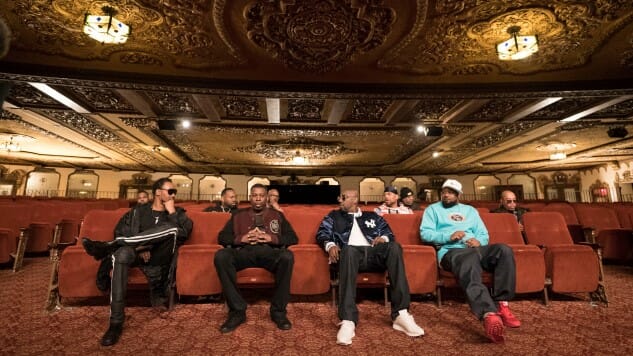Of Mics & Men Finally and Improbably Reunites the Wu-Tang Clan
Sue Kwon (Courtesy of SHOWTIME)
Sacha Jenkins had an unenviable task in making Of Mics & Men: trying to get all the surviving members of the Wu-Tang Clan together in one spot. That’s an achievement that no concert promoter nor even the managers of the group’s individual members have been able to pull off for years.
But for a few glorious hours, Jenkins got the whole Clan—RZA, Genius, Ghostface Killah, Method Man, Inspectah Deck, Raekwon, Cappadonna, Masta Killa and U-God—into a movie theater to watch clips from their 25 years working with and against each other, and to reflect on their shared history. That the only argument we see them get into in this four-part documentary, airing on Showtime starting tonight, is about how they decided on the name of the group is miraculous.
The archival footage and individual interviews that Jenkins conducts with the members of the Clan tell a different story. A messy tale of a group of friends that joined forces to escape the crushing conditions of their Staten Island home through hip-hop, reached uncommon levels of success, and spent the next two decades arguing over money and their legacy.
-

-

-

-

-

-

-

-

-

-

-

-

-

-

-

-

-

-

-

-

-

-

-

-

-

-

-

-

-

-

-

-

-

-

-

-

-

-

-

-








































